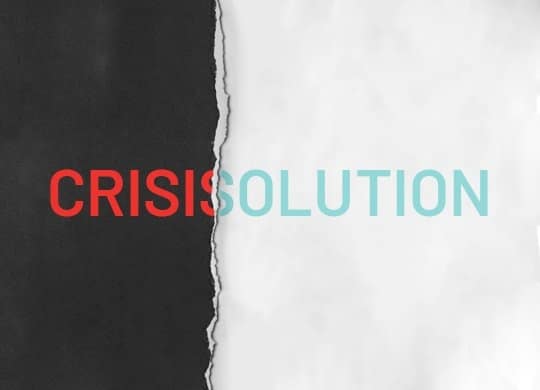You may think that a crisis is something only large companies or well-known brands need to worry about; however, a crisis can hit any company at any time. And whether your company is large or small, local or national, a crisis can rock the foundation of your brand. The manner in which you handle a crisis situation has a tremendous impact on how your brand comes out on the other side of a crisis. In fact, it tells your audiences a lot about your company in its truest form. That’s why it’s important to plan ahead and be prepared to handle a crisis in a way that is true to your brand.
In today’s fast-paced world of information, news of a crisis travels fast and can spin out of control quickly, and if you’re not armed and ready, it can take on a life of its own. With nearly 80 percent of the U.S. population owning a smartphone, there’s a high probability that an event will be talked about online or captured on video. Negative news can go viral in a matter of minutes and not responding is simply NOT an option.
Be prepared. Be ready. Stay in control.
So how do you prepare for the unknown? How can you predict what hot button issue will strike your company and when? Unfortunately, you can’t. However, you can be prepared by dedicating time with key stakeholders in your company to think, plan, and be ready to act with confidence and direction so that you can minimize damage and emerge from the ill-fated situation with your brand integrity intact.
Think About All Possible Emergency or Crisis Situations
There’s a broad range of events that can wreak havoc on a company, from a disgruntled employee to a major disaster with injuries or deaths. When a crisis hits your company, time is of the essence. Responding swiftly with a consistent and unified message is key. The first step to prepare for the worst is to think about the various scenarios that could possibly happen at your company. Meet with key executives and those within your company responsible for internal and external communications who know your business, employees, customers, and your community best to determine potential crisis situations and make a list.
The list may include:
Immediate Crises: situations with no warning that happen suddenly and unexpectedly, such as:
- Natural disasters (tornado, hurricane, fire, flood)
- Workplace incident/accident
- Disgruntled employee
- Cyberattack/technological failure resulting in outages/customer data loss
- Injury/death of a key executive
Emerging Crises: situations that evolve over long periods but then erupt, such as:
- Product defects/recalls
- False rumors/speculations
- Corporate culture (e.g., sexual harassment, misuse of funds/overcharges)
- Customer complaints
Once you have identified potential scenarios, draft questions, answers, and resolutions for each situation to map out how your company would handle and respond. Then start developing a strategy for how your company will control the situation as opposed to reacting to it.
Plan Ahead for a Potential Crisis Situation
While it’s impossible to plan out every detail of responding to a crisis situation without knowing the crisis, it’s best to have a plan
- Crisis Committee: Determine all members of the committee. Have a list of names, mobile phone numbers, email addresses, home addresses, and an emergency contact for each. Determine how/how often the crisis team will meet to assess the situation and craft action and response plans.
- Establish Communications Center: This is a group of decision makers who gather information, share information, assess the situation, and notify internal and external audiences of important updates and announcements. Identify who will be the public spokesperson for your company throughout the crisis. Determine how you will meet and communicate – a central location, group text, conference/video calls?
- Important Tasks: Focus on your two most important tasks–what you’re going to do and what you’re going to say in the first critical hours.
- Monitor & Respond: Develop a strategy for how you’re going to respond to inquiries and accusations in the news, on social media, and calls directly to your company. Using information gathered in the communications center and input from the crisis committee, you should carefully craft and deliver responses to demonstrate your company’s concern for the situation and people it involves as well as what you are doing or planning to do to address the situation.
Communication is Key
Managing communications during a crisis situation is easier when key stakeholders agree in advance about your company’s approach to being open, transparent, and authentic. It’s important to have everyone on board to avoid confusion, conflict, and delay. Not responding to a situation is not an option. Gather facts, know your target audiences, and understand how a particular crisis will impact each segment (employees, customers, vendors, stakeholders, local community/general public). Knowing how you’re going to respond will help minimize negative impact, maintain normal business operations as much as possible, and instill confidence and support for your brand during and after the situation.
When communicating with anyone about the crisis, whether it’s an official media interview or responding to comments on social media, remember these guidelines:
- Assess the nature of the question/inquiry
- Prioritize customer/employee risks and concerns
- Respond promptly and clearly using key messages defined by the communications team
- Educate, support, and update all stakeholders as information becomes available
- Monitor sentiment and assess business impacts (short and long term)
It’s important to monitor media and social media and stay on top of what is being said by and to whom. This allows you to be proactive and not reactive, providing updates as information comes available and the situation unfolds. Focus on protecting your reputation and staying true to your brand values by reiterating your concern and the commitment your company is making to resolve the issue and care for those impacted.
In the days and weeks following a crisis situation, regroup with company leaders for a post-crisis communications discussion and devise a plan to move past the crisis and move forward. When is it appropriate to start fresh campaigns to reestablish brand loyalty and push positive news out on social and to the media? What follow-up communications needs to be sent out – what’s the message and who should receive it?
We can learn from others, from companies who handled crisis situations well and those who flopped. Here are examples of both:
Did it right:
American Red Cross
A Red Cross employee accidentally tweeted about finding more beer and “#gettngslizzerd” on the Red Cross Twitter account instead of a personal account, and the results could’ve been disastrous. However, the organization quickly responded, used a little humor and honesty tweeting “We’ve deleted the rogue tweet but rest assured the Red Cross is sober and we’ve confiscated the keys.” Being honest and real goes a long way. Read more here .
Domino’s
Domino’s employees posted hoax videos about unsanitary practices at Domino’s, and swift action and responses maintained the pizza brand’s integrity. What they experienced in 2009 was how quickly videos can gain traction, put a national brand under scrutiny, and threaten to damage a reputation in a matter of days. By acting quickly, finding and firing the perpetrators, and involving the media and local authorities, Domino’s PR team came out on the positive side and learned some important lessons during this crisis. Read more here.
Missed the mark:
BP Oil
In 2010, a huge oil rig explosion resulted in the biggest oil spill in U.S. history. During the 87-day spill, BP Oil executives were not forthright in facts about how much oil was leaking each day, estimating 1,000 barrels a day, when it was later discovered to be closer to 5,000 a day. Honesty is always the best policy even when the information is unfavorable. The truth always comes out, and you can protect your trustworthiness by being honest and dealing with the facts from the start. These misstatements were a huge hit to BP’s brand reputation. Read more here.
Peloton Treadmills
Peloton initially rebuked a statement from the Consumer Product Safety Commission report warning about the safety of two of its treadmills, stating the CPSC warning was “inaccurate and misleading.” Days later, the CEO issued an apology, and the company recalled 125,000 treadmills in an attempt to do the right thing. The damage to the brand was done with a poor initial response to the report, and Peloton struggles to regain customer trust, even after a record-breaking year during the pandemic. Read more here.
Get started with your crisis communications plan now – contact FUEL to discuss how we can help.







